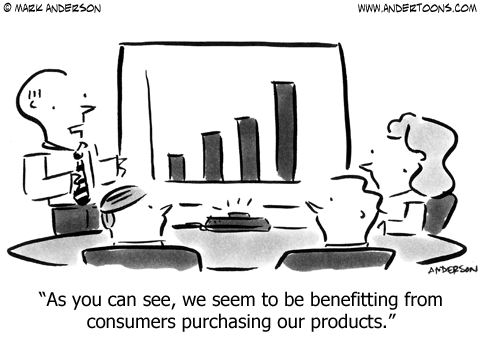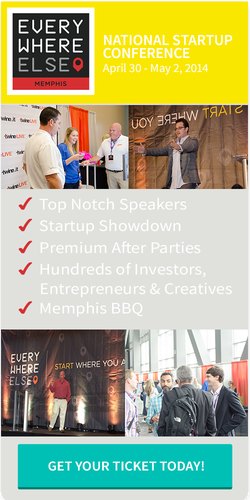 Question: What do you use to share leads and contacts seamlessly among virtual team members?
Question: What do you use to share leads and contacts seamlessly among virtual team members?
WORKetc
“I use an SaaS software product entitled WORKetc. This software is customizable so all team members, or only a select portion of your staff, can have access to leads.”
Andrew Schrage, Money Crashers Personal Finance
 Act!
Act!
“I love Act!; it stands the test of time. It is a very easy interface; the search functions are great, and the ability to convert the customer data to Excel to do direct mail or constant contact campaigns is very attractive. Most of our customer data is from organizations looking to book our CEO clients for events, and Act! allows us to keep organizations updated on our clients and activities.”
Raoul Davis, Ascendant Group
Streak
“We live in our email inboxes at work, so it makes sense to have a CRM system that seamlessly integrates with our email. Since we use Google Apps for Business on the Poshly team and Gmail is our preferred email provider, Streak is a phenomenal resource for us to share leads and contacts with ease among all of our virtual team members. Our correspondence and contacts are in one place. “
Doreen Bloch, Poshly Inc.
Salesforce.com
“Salesforce.com seems like one of the “big guys” now, but it’s still a nimble tool that allows companies large and small to organize leads. The product forces your team to be disciplined in tracking, and following up with, sales opportunities. We now have a much clearer idea of the sales funnel, and we don’t let opportunities fall through the cracks, which is pretty critical to any startup!”
Aaron Schwartz, Modify Watches
Highrise
“We use the 37signals software program called Highrise. It’s great because everyone on our team can collaborate from wherever we are. We share a database of contacts and can constantly see an up-to-date snapshot of each team member’s outreach, share notes, and assign tasks. The mobile app is especially helpful for on-the-go access. It has helped streamline our CRM efforts in a big way.”
Brittany Hodak, ZinePak
Zoho
“Zoho is a fully customizable CRM solution that allows our team to organize and track leads to convert them into clients. The full functionality of Zoho allows our team to effectively optimize sales through customized reports on the success of leads by source, industry and other indicators. Best of all, it’s free for up to three users, and you can integrate/sync it with Outlook. “
Fehzan Ali, Adscend Media LLC
Close.io
“Close is a new tool that makes it very easy for our sales and accounts teams to seamlessly share info. The beauty of Close.io is they’ve integrated literally every key feature you can think of to make sure other team members know exactly what’s happened with any given contact. Close.io has been a complete game changer for us, and it has increased our efficiency substantially. “
Sunil Rajaraman, Scripted.com
Google Docs
“It’s old school but it works. We don’t claim to have a fancy CRM, and I expect a salesperson to call me after this article gets published, but we’re perfectly happy sharing an Excel spreadsheet and taking copious notes. We can also download segmented email lists from Mailchimp and import customer data from PayPal, Google Checkout, and Eventbrite. All the information is there for us. “
Matt Wilson, Under30Experiences
ConnectWise
“ConnectWise is a customizable system that allows us to manage all of our resources in one location, facilitate collaboration, and ensure streamlined operations. It serves as a database for sales leads, opportunities, and contacts and is an efficient tool to track status and time on tickets and projects. Most recently we are integrating ConnectWise into a new quoting system for seamless end-to-end workflow. “
Dave Smith, TekScape
Salesforce and MailChimp
“We use MailChimp for all our email campaigns directed at new community members, and we use Salesforce as a CRM for potential ad sponsors. Both solutions work well with our virtual team members.”
Patrick Curtis, WallStreetOasis.com
Dropbox
“I’m a big fan of Dropbox. Being able to access documents, spreadsheets, contacts and more without having to email back and forth has made our business more efficient. We share certain folders in Dropbox. The documents and files within the shared folder are updated whenever a user makes changes to the original. Also, access to the folders is easy to obtain and can even be done off Dropbox’s mobile app.”
George Mavromaras, Mavro Inc. | Praetor Global LLC.
Ruby on Rails
“We’ve created a built-from-scratch CRM in Ruby on Rails over the last five years that allows us to seamlessly allocate leads among virtual employees. We have 35 full-time and 35 part-time employees and 1,800 tutors — all operating from home. Building a system for our own very specific needs was far more expensive, but has been far more powerful than any CRM we’ve ever tested, such as Salesforce.com. “
Chuck Cohn, Varsity Tutor


 In a time of constant movement, constant communication, continual achievement and an ongoing list of to-dos, at the end of the day we feel we’ll never get ahead. It seems like our days are controlling us, rather than us controlling them. This constant busyness can actually take you off course from your high-value goals; hurt your physical, psychological and emotional system; and even damage or destroy relationships. I have been studying some of the top executives, CEOs, authors, and millionaires in the past couple of years and wanted to share a couple thoughts that might help you work at your productive best.
In a time of constant movement, constant communication, continual achievement and an ongoing list of to-dos, at the end of the day we feel we’ll never get ahead. It seems like our days are controlling us, rather than us controlling them. This constant busyness can actually take you off course from your high-value goals; hurt your physical, psychological and emotional system; and even damage or destroy relationships. I have been studying some of the top executives, CEOs, authors, and millionaires in the past couple of years and wanted to share a couple thoughts that might help you work at your productive best.
